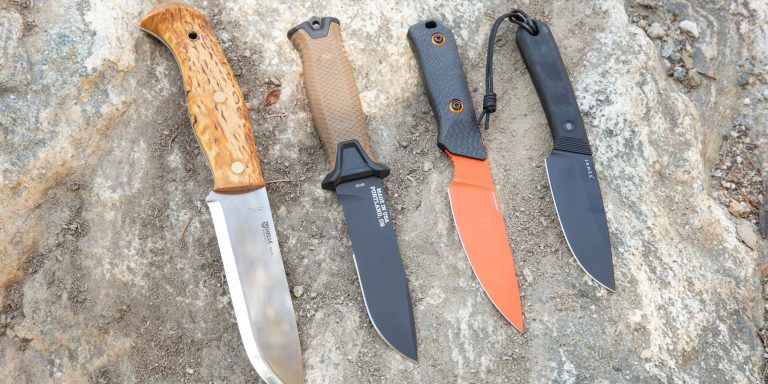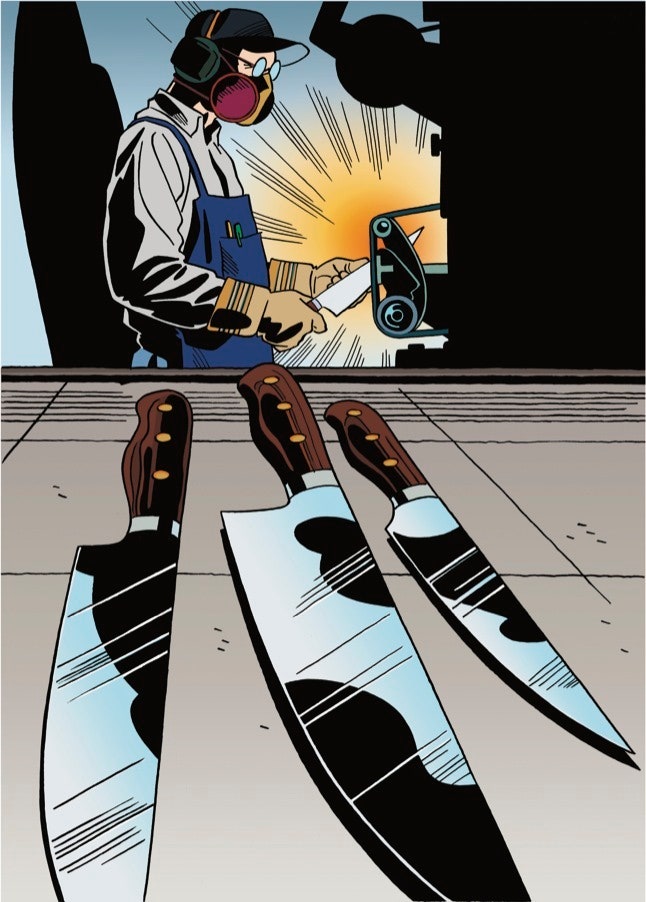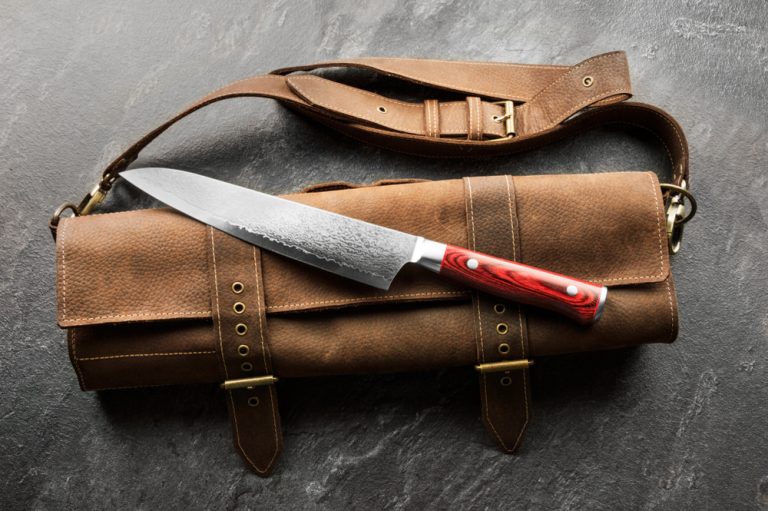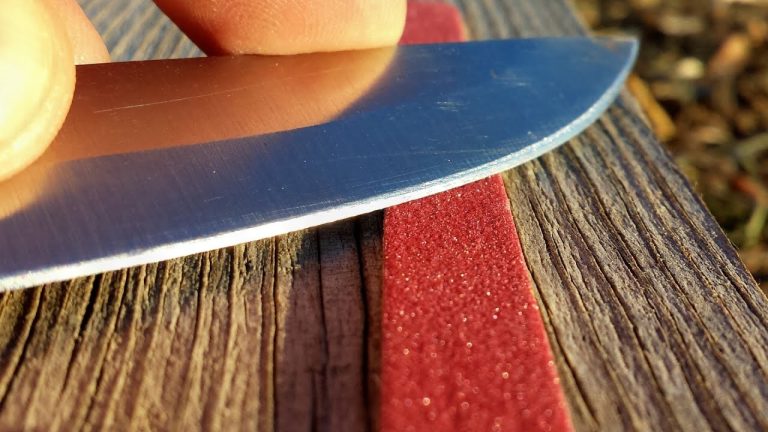The Anatomy of a Hunting Knife: Blade Types And Materials
A hunting knife’s anatomy includes different blade types and materials, which determines its performance. We will explore the various blade types and materials used in hunting knives.
From carbon steel blades to stainless steel variants, each material has unique properties that impact the knife’s strength, sharpness, and corrosion resistance. Similarly, blade types such as drop point, clip point, and tanto offer distinct advantages for different hunting tasks.
Understanding these essential components will help you choose the right hunting knife for your needs. So, let’s delve into the anatomy of a hunting knife and discover the benefits of different blade types and materials.
Drop Point Blade
The Anatomy of a Hunting Knife: Blade Types And Materials
Definition and Features
A drop point blade is a popular blade type commonly found in hunting knives. It is characterized by a convex curve from the spine of the blade to the tip, which gradually slopes downward. This design gives the blade superior strength and durability, making it ideal for heavy-duty tasks.
The drop point blade’s primary features are its sharp tip and broad belly, which provide a wide cutting surface. The tip is lowered, reducing the risk of accidental punctures, while the belly aids in slicing and skinning. These attributes make the drop point blade well-suited for field dressing and skinning game.
Benefits and Usage
One of the main advantages of a drop point blade is its versatility. The strong and robust design allows for efficient cutting, making it suitable for a variety of tasks, from general camping and survival activities to more specific hunting-related activities.
Thanks to the drop point blade’s durability and cutting performance, it can handle tough materials like wood and bone with ease. Hunters often prefer this blade type as it excels in skinning, caping, and other precision cuts required in dressing game.
Overall, the drop point blade is an excellent choice for hunters and outdoor enthusiasts seeking a reliable and versatile tool. Its strength, cutting efficiency, and versatility make it an essential component of any hunting knife.
Clip Point Blade
A clip point blade is a popular blade type used in hunting knives. It is characterized by a concave section near the tip of the blade, which creates a clipped appearance. This design feature makes the blade thin and sharp, ideal for precision tasks.
The benefits of a clip point blade include excellent piercing ability due to the sharp point. It is well-suited for detail work and controlled cuts. The long, curved belly provides a larger slicing surface for tasks such as skinning game.
Hunters often use knives with clip point blades for cutting through cartilage or performing delicate tasks while field dressing or processing game. However, the thin tip of the blade may be more prone to breakage if used for heavy-duty tasks.
Tanto Blade
A tanto blade is a distinct blade type commonly found in hunting knives. It features a straight edge that meets a sharp angle, forming a triangular shape. This design offers several benefits, including increased strength and durability. The angled tip of a tanto blade provides excellent piercing capabilities, making it especially effective for tasks such as cutting through tough materials or thrusting into target objects.
Additionally, the robust construction of a tanto blade allows for heavy-duty usage without the risk of breaking. Its reinforced tip ensures stability and prevents accidental tip breakage, making it a reliable choice for hunting and other outdoor activities. With its impressive strength and piercing ability, a tanto blade is highly versatile and suitable for various tasks, including self-defense, survival situations, and general everyday use.
Stainless Steel
Stainless steel is a highly sought-after material when it comes to hunting knives. Its characteristics and advantages make it a popular choice among outdoor enthusiasts. The durability and corrosion resistance of stainless steel blades ensure that they can withstand harsh conditions without compromising performance.
There are several popular stainless steel grades used in the manufacturing of hunting knives. Some of these include:
| Grade | Description | Advantages |
|---|---|---|
| 440C | A high carbon stainless steel with excellent toughness and wear resistance. | Great edge retention and corrosion resistance. |
| 154CM | A premium stainless steel known for its superior edge retention and strength. | Highly resistant to corrosion and wear. |
| AUS-8 | A Japanese stainless steel known for its toughness and ease of sharpening. | Good corrosion resistance and edge retention. |
Each stainless steel grade offers its own set of advantages, allowing hunters to choose the one that best suits their needs. Whether it’s the exceptional edge retention of 440C, the superior strength of 154CM, or the ease of sharpening of AUS-8, stainless steel blades provide reliability and performance in the field.
Carbon Steel
Carbon steel is one of the most popular materials used for hunting knife blades due to its exceptional qualities. It is known for its high carbon content, which results in increased hardness and durability. Carbon steel blades have excellent edge retention, making them suitable for heavy-duty tasks. They are also easier to sharpen compared to other materials. When it comes to characteristics and advantages, carbon steel blades offer outstanding toughness and great resistance to wear and tear. They can withstand rough handling and are less likely to chip or break. Additionally, they have good corrosion resistance, although they require regular maintenance to prevent rust. Various carbon steel grades are commonly used for hunting knives. Some popular choices include: |
| Carbon Steel Grade | Characteristics |
|---|---|
| 1095 | High carbon content, excellent edge retention, good toughness |
| 1080 | High carbon content, good edge retention, easier to sharpen |
| 1050 | High toughness, good edge retention, moderate hardness |
Damascus Steel
Damascus steel has fascinated hunters for centuries due to its remarkable characteristics and advantages. This type of steel is known for its exceptional strength, durability, and unique appearance. The distinctive patterns found on the surface of Damascus steel give hunting knives an aesthetic appeal that is highly sought after.
One of the key advantages of Damascus steel is its superior hardness and sharpness. This makes it ideal for hunting knives as it provides excellent cutting performance, allowing hunters to make precise and clean cuts. Additionally, Damascus steel is known for its excellent edge retention, meaning it can maintain its sharpness for extended periods of time, reducing the need for frequent resharpening.
Popular types of Damascus steel used in hunting knives include the W-pattern, ladder pattern, and twist pattern. Each pattern offers a unique design and visual appeal. These patterns are achieved through a painstaking process of layering and folding the steel multiple times, resulting in the distinctive patterns characteristic of Damascus steel.
| Type | Description |
|---|---|
| W-pattern | This pattern resembles the letter W and is created by alternating layers of steel. |
| Ladder pattern | This pattern features parallel lines running vertically, resembling the rungs of a ladder. |
| Twist pattern | This pattern displays twisting lines that create an intricate and mesmerizing visual effect. |
In conclusion, Damascus steel offers a combination of strength, sharpness, and visual appeal that makes it a popular choice for hunting knives. The different patterns available allow hunters to choose one that matches their personal taste and style. If you’re looking for a high-quality hunting knife, consider one made with Damascus steel.
Blade Design And Purpose
When it comes to hunting knives, the design and purpose of the blade are crucial factors to consider. Matching blade shapes to specific hunting tasks ensures efficiency and effectiveness in the field. Different blade shapes are designed to perform specific functions, such as skinning, caping, boning, or field dressing.
Determining blade thickness is another essential aspect. Thicker blades provide strength and durability, making them suitable for heavy-duty tasks like chopping or survival situations. Thinner blades, on the other hand, offer precision and agility, ideal for tasks that require detailed work or delicate maneuvers.
| Blade Shape | Hunting Task |
|---|---|
| Skinning blade | Efficiently removing the hide with minimal damage to the meat |
| Boning blade | Precisely separating meat from bones |
| Caping blade | Creating detailed cuts around the head area for taxidermy purposes |
| Gut hook blade | Open game animals while avoiding piercing vital organs |
By understanding the anatomy of a hunting knife, including the various blade types, shapes, and thicknesses, hunters can select the right tool for the job, enhancing their hunting experience.
Blade Hardness And Toughness
In the world of hunting knives, blade hardness and toughness are key factors to consider. Blade hardness refers to the ability of the blade to resist deformation under stress, while toughness refers to the ability to withstand impacts and absorb energy without breaking. The Rockwell Hardness Scale is a commonly used measure to determine the hardness of a blade. It ranges from 0 to 100, with higher numbers indicating increased hardness. However, it’s important to find the right balance between hardness and toughness. A blade that is too hard may be prone to breakage, while a blade that is too tough may lack sharpness. Manufacturers often use different materials and heat treatment processes to achieve the desired hardness and toughness for specific blade types. Understanding the Rockwell Hardness Scale can help you make informed decisions when selecting a hunting knife.
Corrosion Resistance And Maintenance
A hunting knife is a valuable tool for any outdoorsman, but it is important to understand the different materials used for the blades and how to maintain them. When evaluating blade materials for corrosion resistance, there are a few factors to consider.
Stainless steel is a popular choice due to its ability to resist rust and corrosion, making it low maintenance and ideal for out in the field. Other materials like carbon steel and high carbon stainless steel provide excellent sharpness and strength but may require more maintenance to prevent corrosion.
Recommended maintenance practices vary depending on the blade material. For stainless steel blades, regular cleaning with warm water and mild soap is usually sufficient. For carbon steel blades, additional steps such as drying thoroughly and applying blade oil are crucial to prevent rust.
| Blade Material | Recommended Maintenance |
|---|---|
| Stainless Steel | Regular cleaning with warm water and mild soap |
| Carbon Steel | Dry thoroughly and apply blade oil to prevent rust |
| High Carbon Stainless Steel | Similar maintenance as stainless steel blades |
By understanding the different materials and their maintenance requirements, hunters can choose a hunting knife that suits their needs and ensure its longevity. Regular maintenance and care will help preserve the quality and performance of the blade, ensuring it remains a reliable tool for hunting adventures.

Credit: fnsharp.com
Conclusion
After exploring the various blade types and materials that make up a hunting knife, it is clear that each component plays a crucial role in its performance and durability. The tang, bevel, and edge type determine the knife’s strength and cutting ability, while the materials used for the blade, such as stainless steel or carbon steel, offer their own unique advantages.
When choosing a hunting knife, it is important to consider your specific needs and preferences, as well as the intended use and expected conditions. Whether you opt for a drop point, clip point, or tanto blade, or choose between stainless steel and carbon steel, understanding the anatomy of a hunting knife will enable you to make an informed decision.
So, go ahead and select the right blade type and material for your hunting adventures, ensuring that you have a reliable and efficient tool by your side. Happy hunting!






